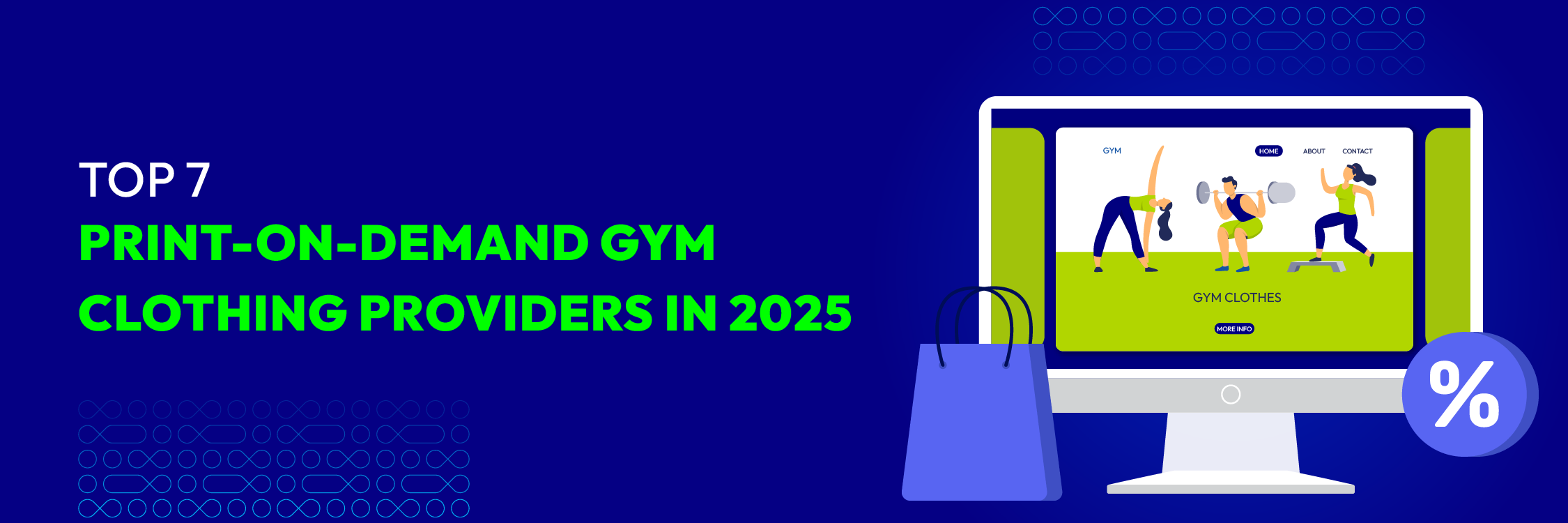E-commerce Email Automation: Best Guide 2024
Summer Nguyen | 12-18-2024
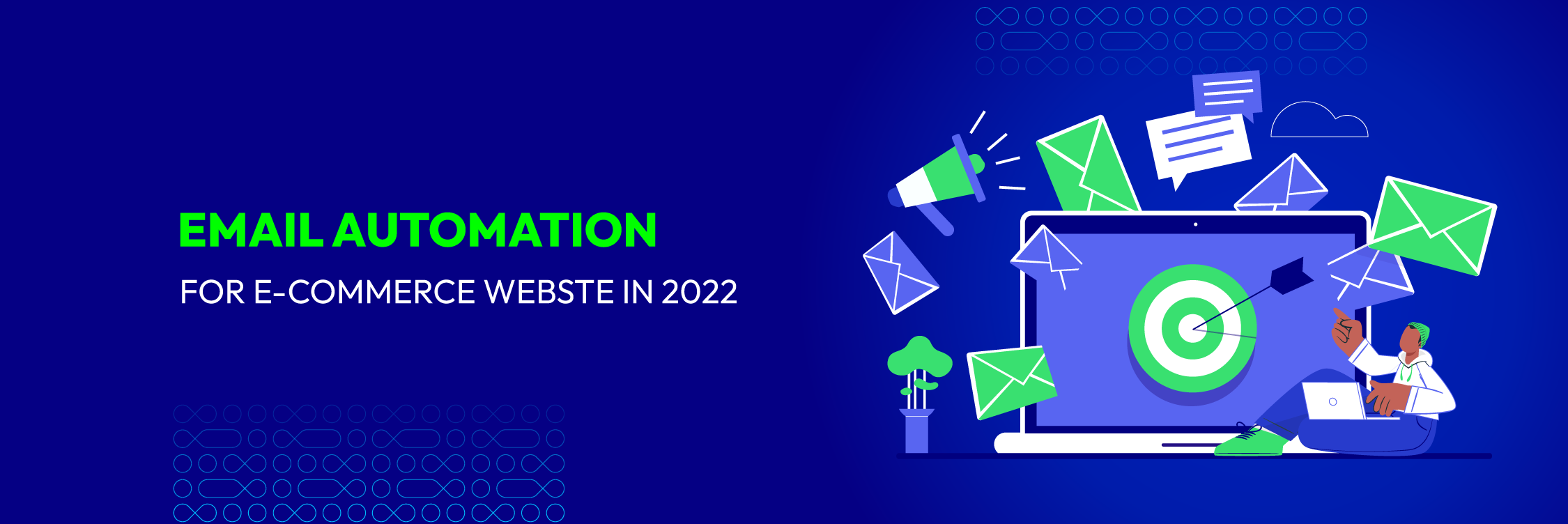
Every business out there uses email. And so do you. So, what can you do to place yourself a cut above the rest? Two words- email automation. But well, that’s only the short of it. The long of it is what forms the main scope of this article. Grab yourself the most ergonomic chair you can see around you; you will want to be really comfortable for this. All set? Let’s dive in!
What is Email Automation?
Email automation is the practice of sending automated or triggered emails to your subscribers when they either perform a certain activity or satisfy particular pre-set conditions or triggers. This is usually facilitated by a marketing automation platform or software. Ever received an email in your inbox the very instant you finished signing up on a website? Yes, that’s email automation right there.
“But, I can just as well send an email manually every time a customer creates a new account on my website, right?”
Well, technically, you can. But, suppose, you have a thousand new account creations taking place every day. Can you imagine the sheer amount of time you will have to spend crafting these emails? Time that you could have possibly invested elsewhere? This is among the many reasons why email automation is such a boon for businesses across the globe.
It doesn’t matter whether you are a small or mid-sized firm or an established multinational corporation- if you want to stay ahead of the curve, email automation is the way forward.
How ecommerce email automation works?
Setting up your email sequence automation? Keep these two points in mind:
-
Segmentation:Let’s sort your email list. Client conduct, buying records, where they live, and their age or job can help. Why? If emails connect with what’s relevant for them, they are more likely to respond. Each group will have its unique traits. Recognize these and make your emails meaningful.
-
Personalization:Personal emails work wonders. Say their name, suggest products, extend special offers. Capture their attention, make them feel seen. Let your brand reflect what they like and how they interact with you. Got the basics? Awesome. Now, it’s about getting your automatic email sequence to work. You do this by making workflows considering:
Behavioral triggers
The initiation of an automation workflow begins with triggers, which are events that kickstart the automation process. These triggers are often actions taking place in your online store or associated applications. For instance, a trigger might occur when a customer makes a purchase, signs up for your newsletter, leaves items in a shopping cart, or provides a product review.
Conditions
Conditions are established guidelines that decide whether a specific action should be carried out after the occurrence of a trigger event. These conditions serve as filters, facilitating the personalization of automation based on specific criteria. For example, suppose you aim to send a unique discount offer to your dedicated customers on their birthdays. In this scenario, the trigger event is the customer’s birthday, and the condition is configured to verify if the customer is enrolled in the loyalty program and if their birthday aligns with the current date. Conditions provide a way to tailor automated actions precisely according to predefined criteria.
Actions
These outcomes or responses are activated when certain conditions are fulfilled. When the trigger event occurs and the specified conditions are satisfied, the automation software will perform the designated action.
For instance, if the mentioned conditions are both satisfied, the automation will proceed to send a personalized birthday discount email to the specific customer.
This ensures a highly targeted and relevant process for individual subscribers. You can establish this entire sequence effortlessly using the user-friendly automation builder in EngageBay.
Suppose you aim to initiate a special promotion email series for your online store. Here’s an illustration of the eCommerce marketing automation you can implement:
Trigger: A customer subscribes to the newsletter.
Action 1: Dispatch a Welcome Email
The automation platform sends a welcome email to the recent subscriber, expressing gratitude for their subscription and presenting the distinctive offerings of the store. Condition: Allow a 3-day interval following the dispatch of the Welcome Email.
What are the Benefits of Email Automation?
The virtues of email automation aren’t just confined to saving your valuable time and resources. Listed below are some of its other merits.
Send your subscribers the right message at the right time
In a world where email inboxes are flooded, choosing the right time to send emails is extremely important for the success of campaigns. Through automation, you can track customer interactions and activities and respond with personalized messages. Personalization, meanwhile, lays the groundwork for improved customer relationships, leading to increased engagement and ultimately higher sales.
Increase productivity by leaps and bounds
Instead of spending time on tasks such as scheduling messages and compiling lists, you can let automation take charge. As a result, your workforce’s productivity will increase, and they will have additional time to focus on other critical issues, such as fine-tuning your content, strengthening customer relationships, etc.
Ensure that you always send relevant content to your subscribers
Not only that, it also ensures that there’s not much of a gap between two successive messages. This improves your customer retention rate significantly. As such, selling to an existing customer is any day more cost-effective than attempting to convert a newly acquired lead.
Assist in making your email marketing scaling incredibly hassle-free
With automation in your toolkit, scaling your email marketing efforts becomes incredibly hassle-free. Irrespective of the volume by which your business grows with time, you will never find yourself struggling to keep up so long you have automation leading the charge.
Effortlessly fine-tune customer engagement
Your marketing team can effortlessly fine-tune customer engagement with email automation. By using details collected from sign-up forms, you can tailor communications to make them feel personal. Use dynamic content blocks to personalize emails even more, considering factors like location, browsing history, and past purchases. This targeted content doesn’t just boost customer satisfaction, it also increases the chances of conversion.
Know what your customers are doing
It’s key to know what your customers are doing for successful email automation. Use behavior triggers to send important, related messages. Say a customer keeps looking at a product group but doesn’t buy anything. An automated email can highlight similar products or give them a special discount. This can spark their curiosity again. Using these behavior triggers makes sure your messages are.
Be mobile-friendly in our mobile-focused world today
In our mobile-focused world today, your automated emails need to work well on mobiles. Your email designs need to be responsive able to work on different devices without issues. Emails that work well on mobiles don’t just make the experience better for users, they also make it more likely for them to interact with your content. Many customers look at their emails on their phones, so being mobile-friendly is key to staying connected to your audience.
Automated Email Campaigns for E-commerce Websites
Email automation is no one-trick pony; it presents you with a diverse bag of tricks. If you want your e-commerce website to cut through the noise, you must familiarize yourself with the various types of automated email campaigns. We discuss them in detail in this section.
Welcome Emails
Welcome emails are the first kind of communication that your customers receive from you and we all know how the saying about first impressions goes. A good welcome email is worth its weight in gold for it instantly endears the subscribers to your brand. Automated welcome emails are not just about casting a formidable first impression; they also go a long way towards increasing your credibility.
How? In the current scheme of things, it has become standard protocol for brands to dispatch a welcome email the very instant a new visitor finishes signing up or creating an account on their website. As a result, customers now actively look forward to it. Hence, if you fail to send one, you might just find your brand reputation being questioned by new users.
That said, what exactly goes into crafting a winning welcome email? Let’s take a look:
- Keep your subject lines engaging. It is the first thing your readers will notice about your welcome email. If it’s not persuasive enough, you can might as well kiss the chances of your email being opened goodbye. Wondering what a good welcome email subject line looks like? Take a look at these examples:
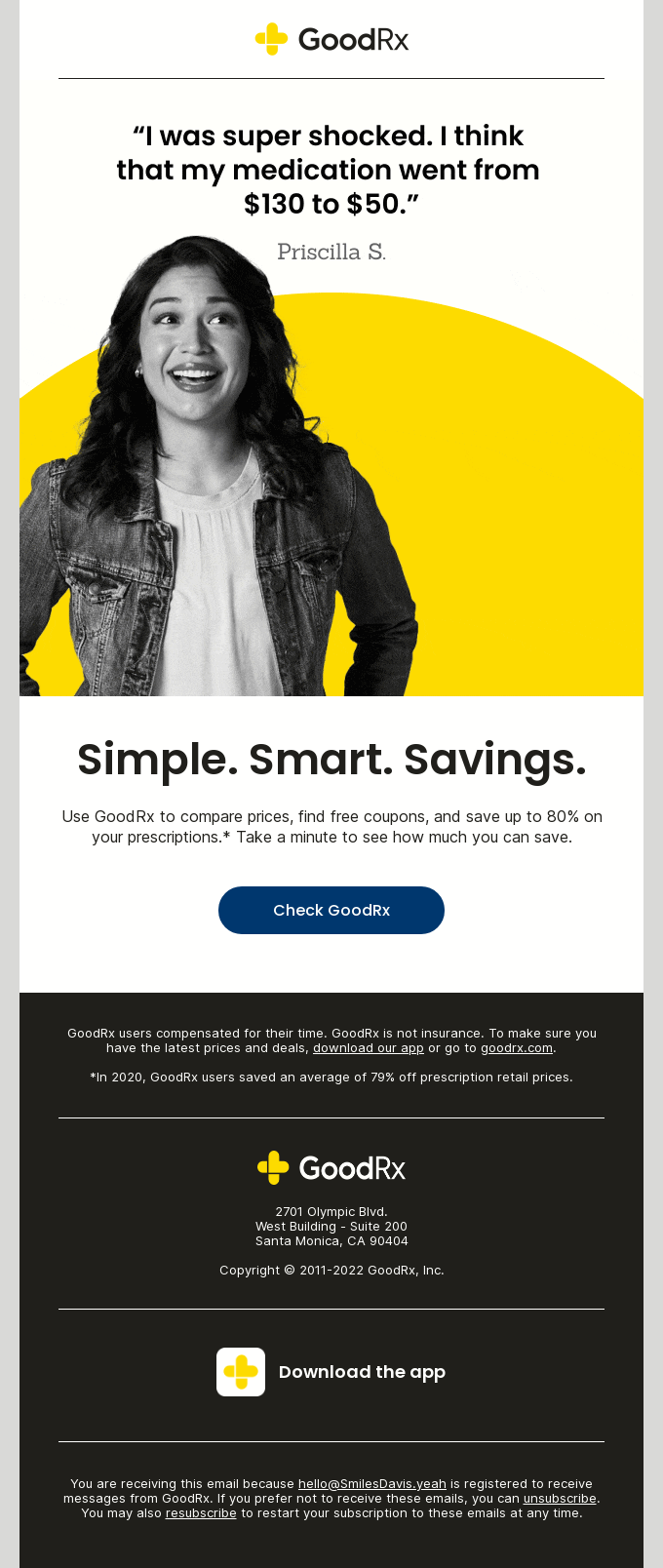

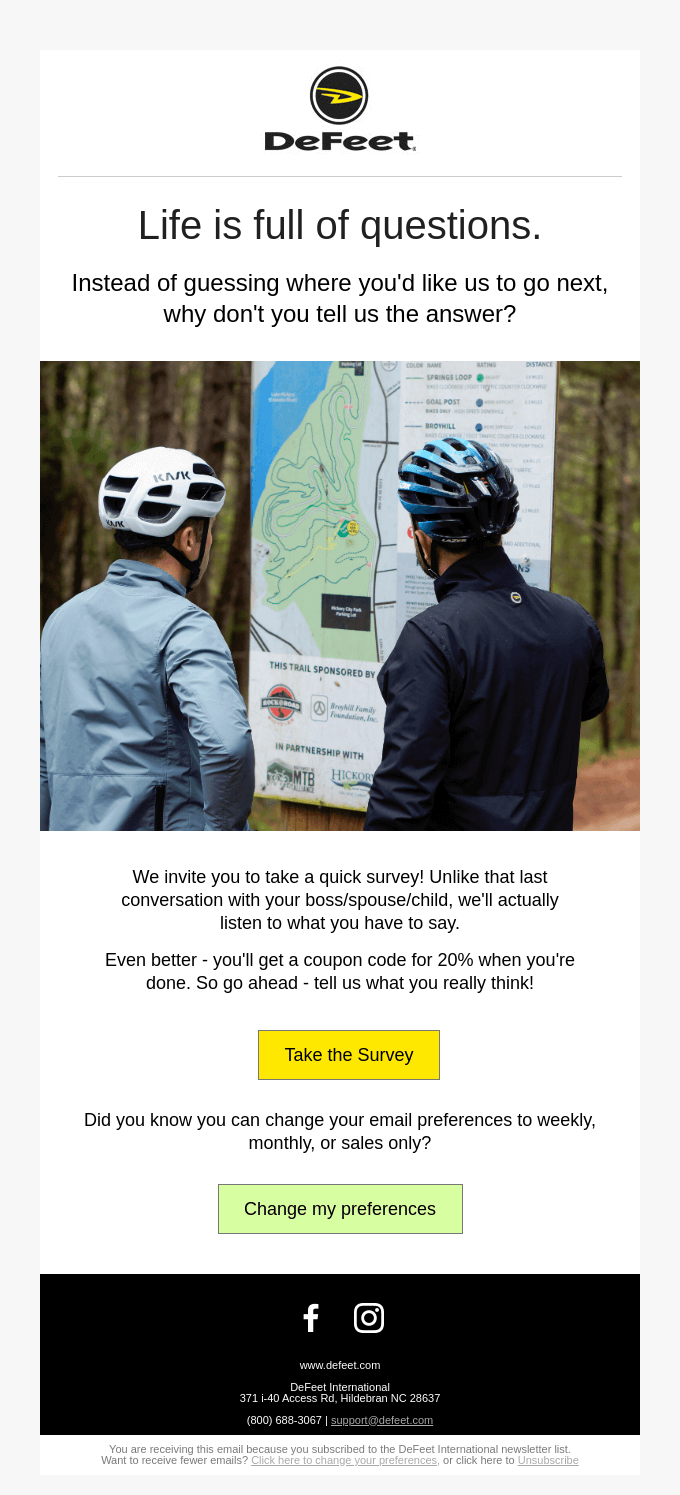
- The tone of your welcome message is extremely critical. It determines whether or not subscribers would want to tune in to your communications in the future. So, make sure that your welcome emails don’t sound overly self-promotional. You don’t have to start selling from the first email itself; welcome emails are best kept unfussy. Confirm that the user has, indeed, successfully opted in or signed up, express your gratitude, and ask them to stay tuned. Easy does it. For instance, take a look at HYLO’s Welcome Email.

-
Offer your subscribers a relevant action. Typically, an individual’s interest levels regarding your brand are at their peak during the welcome email phase. Capitalize on it by giving them something to do. This can be anything- asking them to check your blog, requesting them to whitelist you, inviting them to check out your social media handles, and the like.
-
Include a special offer. Gaining a new customer is a cause worthy of celebration, isn’t it? Well, share this joy with your new subscribers by offering them a reward- a discount, promo code, coupon, or anything you deem fit. Nothing quite screams “We appreciate you for choosing us” quite as loudly as this gesture.
Take a look at this email by The Giving Keys.

- Add an unsubscribe or opt-out link. At the core of long-term customer relationships lies integrity, honesty, and transparency. Let’s face it- irrespective of how compelling your content is, not every new subscriber will be fond of it. Hence, it is important that your welcome email, itself, gives them the choice of opting out. Believe us, the only thing you stand to gain from communicating with someone who doesn’t fancy your emails is a tarnished brand reputation.
Abandoned Cart Emails
Your email marketing armory is utterly incomplete if it is bereft of automated cart abandonment email sequences. As infuriating as they might be, abandoned carts are an inevitability which email marketers don’t have a choice but to contend with. The average cart abandonment rate is a whopping 81.08 %, making it all the more important for you to have an airtight automated abandoned cart workflow at your disposal.
Listed below are a few tips you can take into account while creating your abandoned cart workflows.
- Remember, the customers you will be targeting in a cart abandonment campaign aren’t new shoppers; they are individuals who have already scanned through your website and expressed a clear purchase intent too. But for some reason, they haven’t yet completed the transaction. Therefore, your objective should simply be to lure them back, not to give them a primer about your products.
- Timing is everything when it comes to abandoned cart emails. And usually, these emails are sent in a series, so the frequency between successive emails is equally vital. Send the first email a few hours after the cart abandonment. If that spurs them to action, well and good. Otherwise, wait for at least 24 hours before sending the second one. You don’t want to come across as pushy; you simply want to understand what might be preventing them from completing the purchase and resolve that at the earliest.
- Include an incentive. As we said earlier, abandoned cart emails are all about luring back your customers and nothing works better in that regard than an incentive. Offer them a discount or free shipping or a 45 days return policy- anything you think will grab their attention
- Add an image of the abandoned product in the email. There’s a good possibility that the visitor would have completely forgotten the product they left unattended to in their shopping cart. And what’s a better way to jog their memory than featuring the product itself in the abandoned cart email.
Here’s how the best in the business go about their abandoned cart emails.
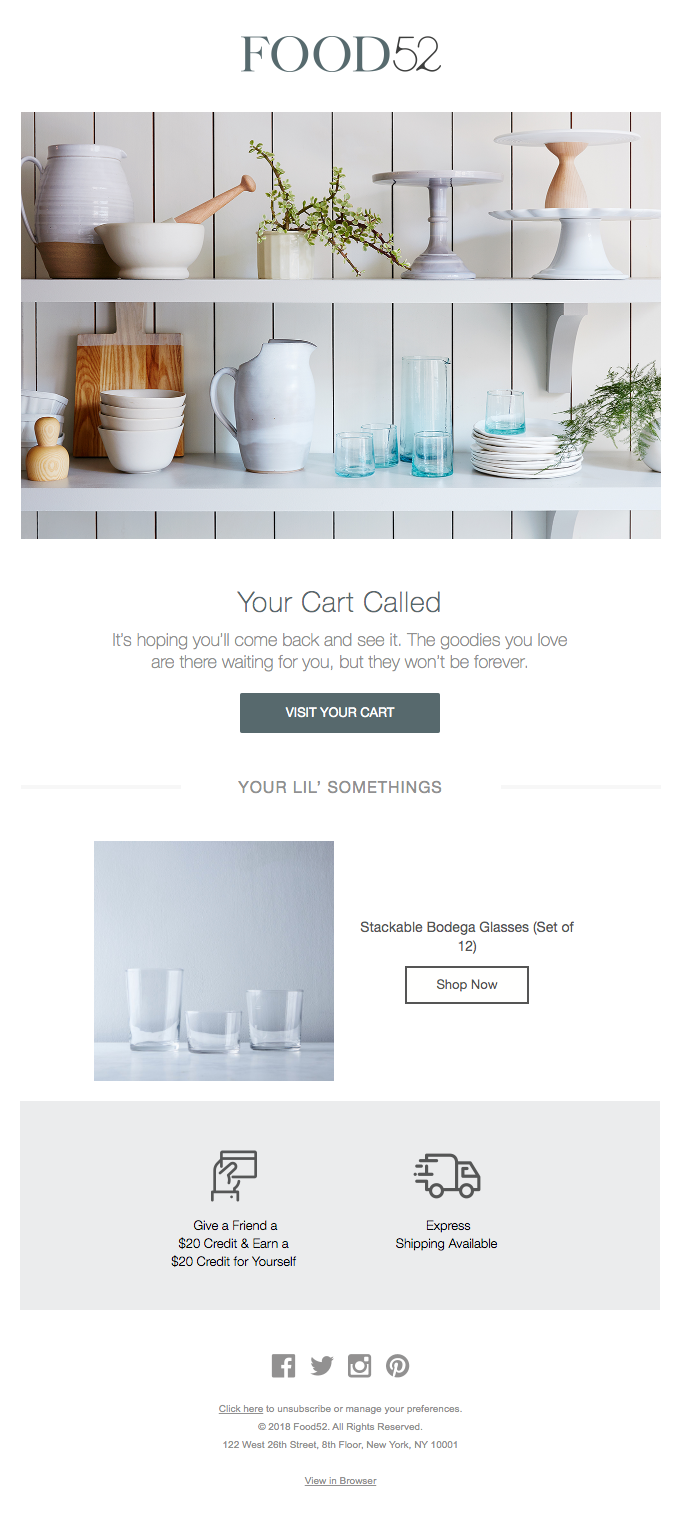
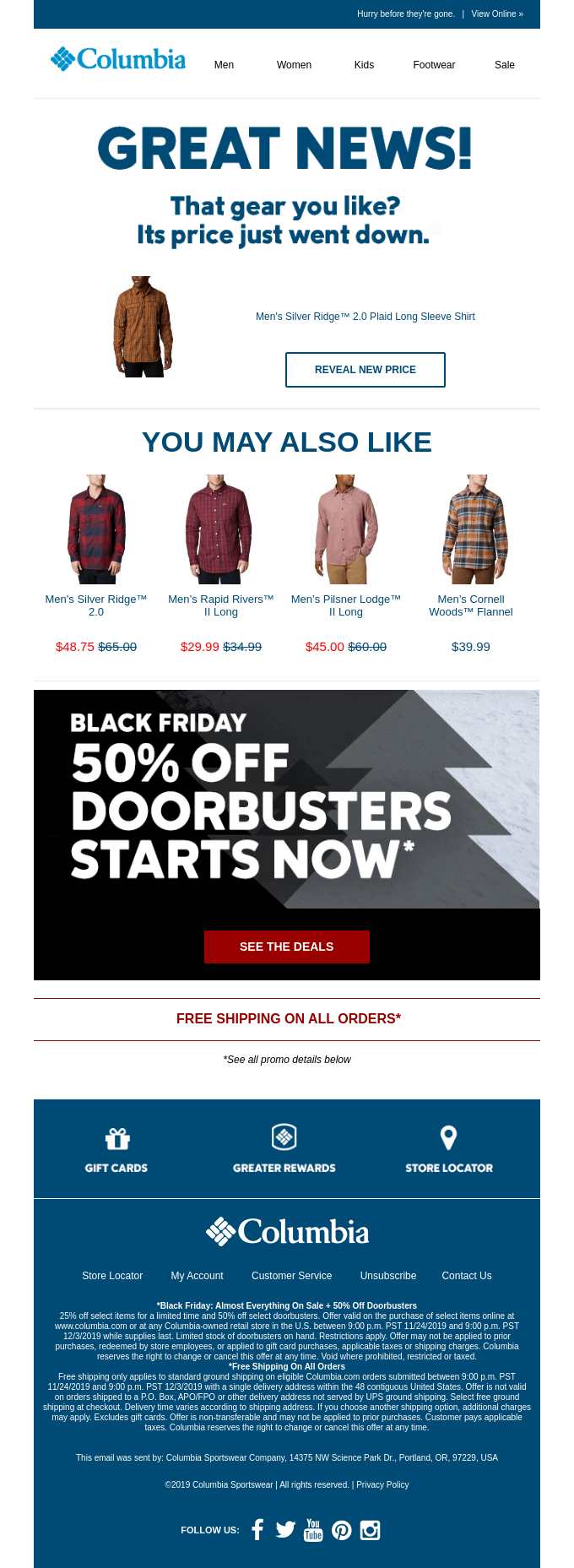

Post-Purchase Emails
Any marketer worth their salt will tell you that the real grind starts after the purchase. That’s where post-purchase automation workflows come into the picture. After they have bought your product, you must follow up with your customers to check how their overall experience was. This tells your customers that you value their feedback, thereby strengthening their loyalty to your brand.
Listed below are some post-purchase email best practices you must keep in mind.
- Say ‘thanks’. It is a simple and effective tactic, costs you absolutely nothing, and does a whole world of good for your customer relationships.
- Try to include a small interactive element. Along with soliciting their review, you can also include a “star” rating scale, where they just have to hover their cursor on the scale to submit their rating. This will greatly enhance the customer experience.
- You can try cross-selling by showcasing a few products that are similar to the one they have purchased.
- Include additional information surrounding the product such as best ways to use it, caring tips, and a few FAQs in the email.
Take a look at these examples.
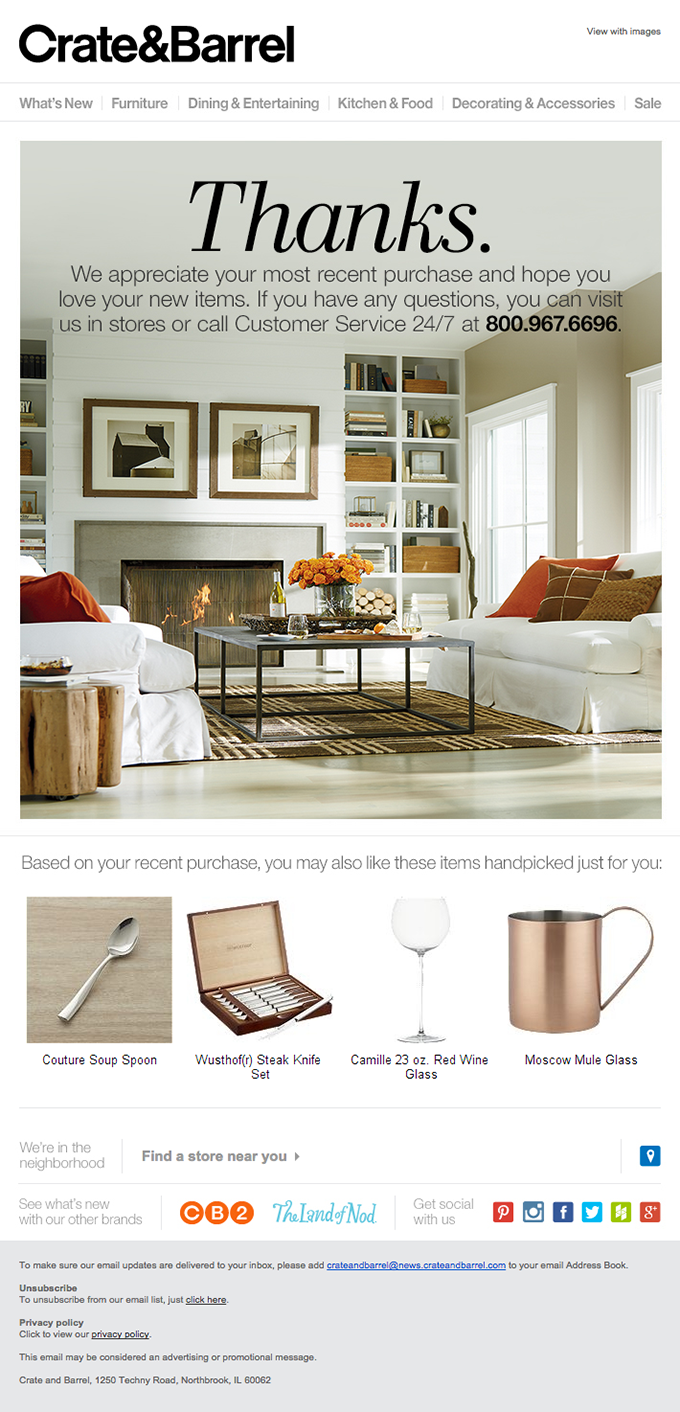

Re-engagement Emails
Does your list have a certain segment of contacts who have, for quite some time, either not purchased from you or responded to your emails? Well, it is about time you targeted them with a re-engagement email automation workflow. Keep in mind that these people are prior customers and are hence quite familiar with a brand. They just need a slight nudge to get back to their shopping ways. And a neatly crafted re-engagement email is what you need to do the trick. Wondering how you should go about it? Let the tips below guide you.
- If a particular contact has been dormant for long, a single email wouldn’t be enough to take stock of you. Hence, re-engagement emails are best executed in the form of a planned sequence.
- Re-emphasize your value proposition. Basically, remind them why they had subscribed to you in the first place. With so much competition in the market, customers generally tend to lose sight of your USP over time, which eventually reflects in their interactions with you. A re-engagement email allows you to register yourself afresh on their radars.
- Bring new benefits under the spotlight. If you have added any new features to your repertoire, leverage them to break the exile of your inactive customers. Nothing delights an old customer more than when their favorite brand promises to add more value to their lives.
Here are a few examples that will get your creative juices flowing.


Thank-you email
The thank-you flow, a post-purchase email, helps build customer loyalty by showing appreciation for their business.
In online shopping, where competition is high, a brief thank you can make customers feel valued for choosing your products.
Listed below are some thank-you email best practices you should remember:
- Promptness: Send the thank-you email promptly after the desired action, such as a purchase or sign-up.
- Personalization: Address the recipient by name and tailor the message to their specific interaction with your brand.
- Gratitude: Express sincere appreciation for the recipient’s action or support.
- Clear Call to Action (CTA): Include a clear and relevant CTA to encourage further engagement, share feedback, or make another purchase.
- Conciseness: Keep the email short and concise, focusing on gratitude and any relevant information or offers.
- Brand Consistency: Maintain consistency with your voice, tone, and visuals to reinforce brand identity.
- Mobile Optimization: Ensure the email is mobile-friendly for recipients accessing it on smartphones or tablets.
- Testing and Optimization: A/B tests different elements of the email, such as subject lines, CTAs, and content, to optimize for engagement and effectiveness.
Here are a few examples:
Thank-you-for-signing-up email
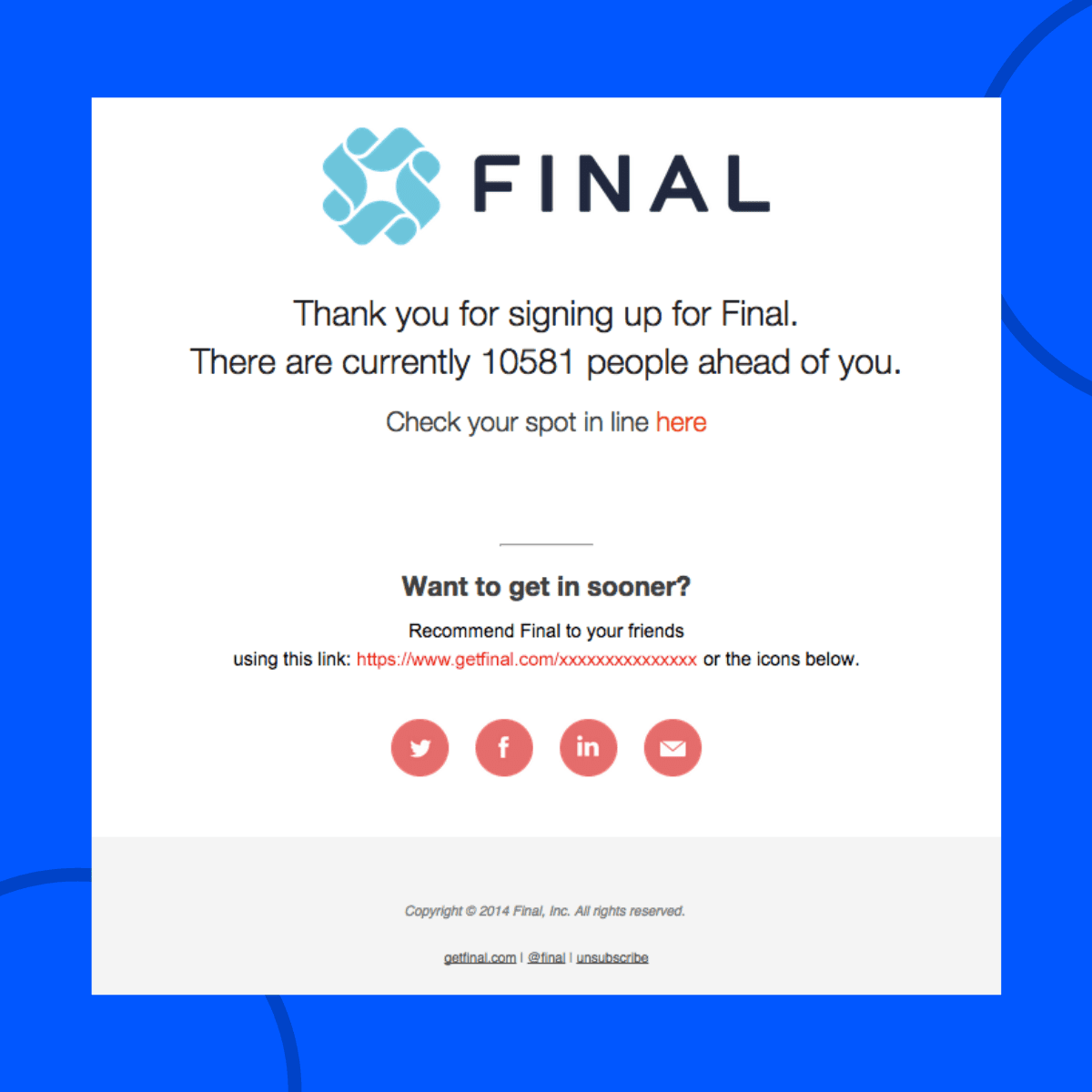
Thank-you-for-placing-your-order-email
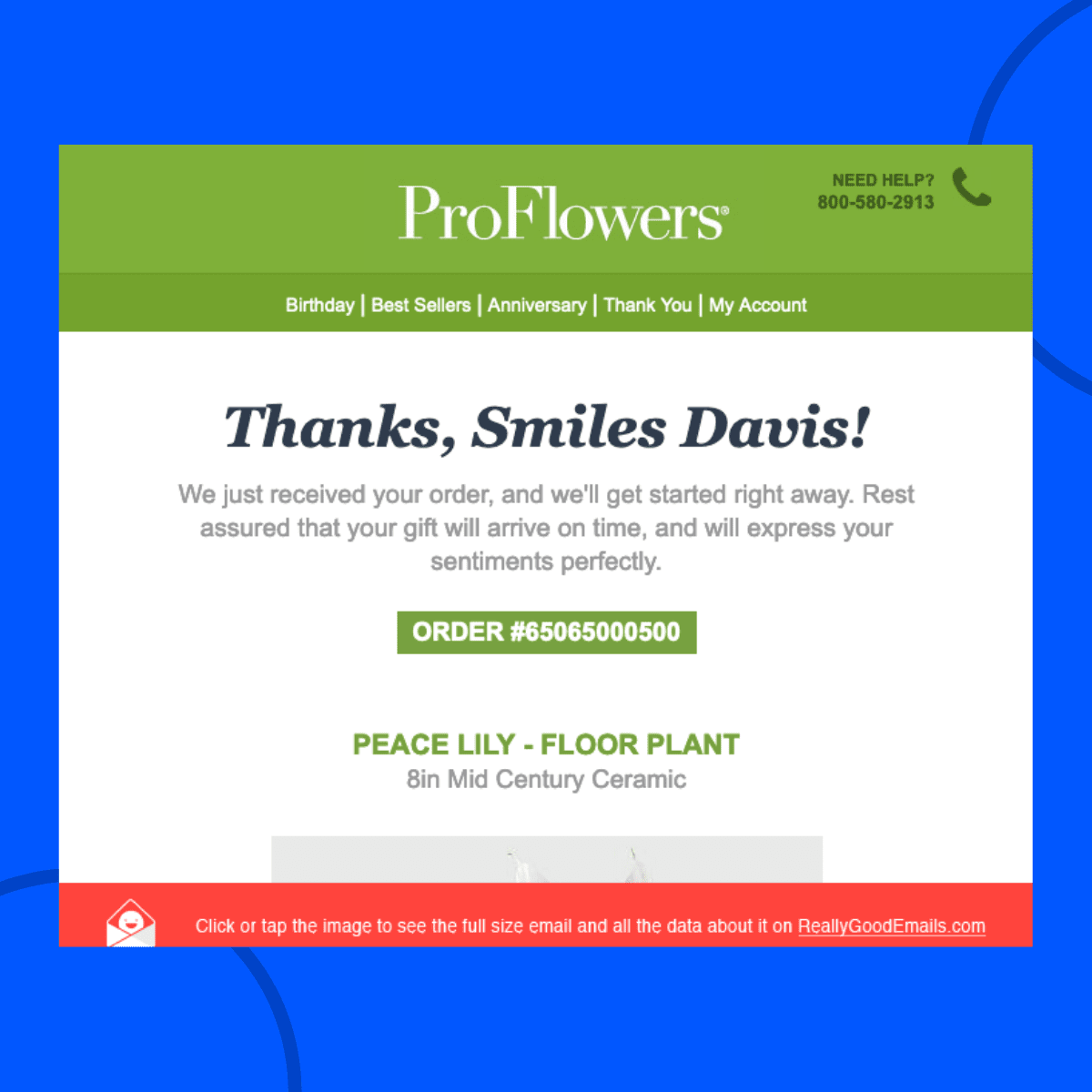
Cross-Sell email
Creating a cross-sell flow is really important, especially for companies with lots of products. It’s a simple way to focus on what customers like and use that to help make more sales.
This flow starts when someone buys something from a certain category. Then, you can send them other emails suggesting products similar to what they bought.
Vero found that 49% of customers bought something they didn’t plan to because of a personalized recommendation.
Listed below are some Cross-Sell email best practices you should remember:
-
Relevance: Recommend products that complement or enhance the customer’s recent purchase.
-
Timing: Send cross-sell emails shortly after the initial purchase to capitalize on the customer’s interest.
-
Personalization: Address the recipient by name and tailor product recommendations based on their purchase history or preferences.
-
Clear Call to Action (CTA): Include a prominent and compelling CTA prompting the customer to explore the recommended products.
-
Benefits: Highlight the benefits or unique features of the recommended products to entice the customer.
-
Visual Appeal: Use high-quality images and visually appealing design to showcase the recommended products.
-
Limited Options: Limit the number of recommended products to avoid overwhelming the customer.
Here are an example:
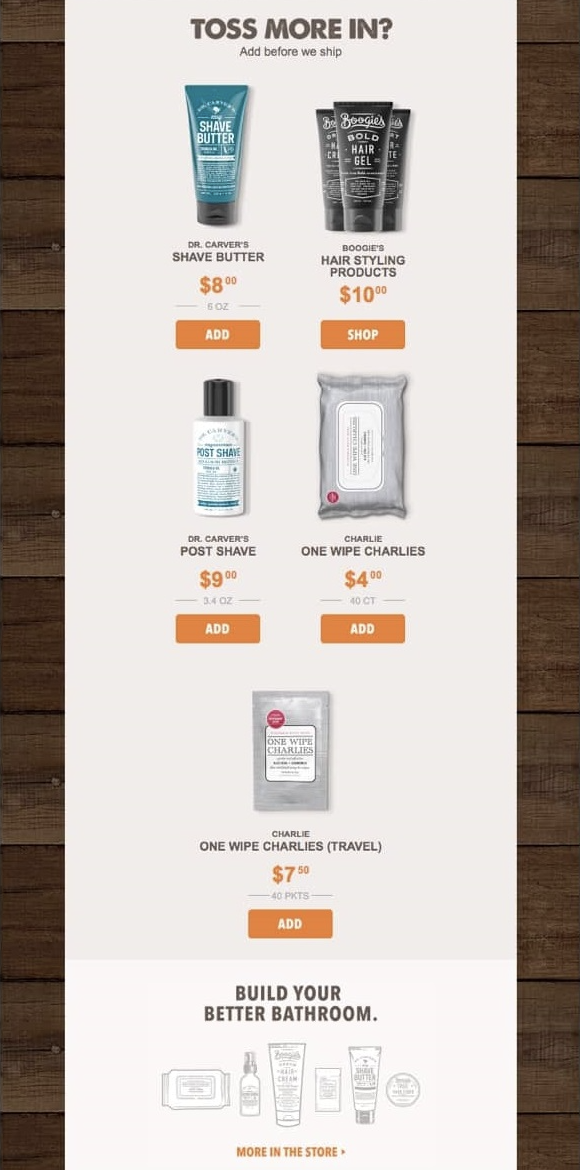
Product-review-automation email
You’ve shown your customers how much you value them. Now, let’s see if we can get them to share their thoughts in public by leaving reviews and testimonials. This next automated process will help you find your brand advocates.
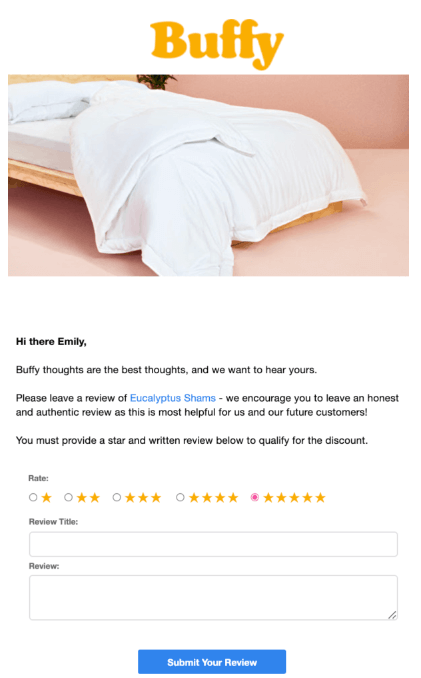
Product review automation increases the chances of getting feedback from customers about their experience with your product. By waiting a while before asking for reviews, you give customers enough time to try out your new product.
Buffy, a bedding brand, sends this easy-to-complete review request a few weeks after customers receive their product. The process is simple, and the message encourages honesty, which helps build trust in the brand.
Listed below are some product-review-automation-email best practices you should remember:
-
Timing: Send the review request after customers have had enough time to use the product, typically a few weeks after delivery.
-
Personalization: Address the recipient by name and reference the specific product they purchased.
-
Clear Instructions: Provide clear and simple instructions on how to leave a review, including any relevant links or steps.
-
Encourage Honesty: Encourage customers to provide honest feedback, which helps build trust in your brand.
-
Incentives (optional): Consider offering incentives such as discounts or rewards for leaving a review, but ensure it complies with platform policies..
-
Follow-Up (optional): Send a follow-up email if customers haven’t left a review after a certain period, gently reminding them and offering assistance if needed.
eCommerce email marketing examples
Introduction Emails
Welcome messages are important. They are like saying hello to new subscribers in an online world. They have two jobs: to make sure the email address is real and to help subscribers form a good opinion of your brand. These messages display the sort of emails your subscribers can expect to get. When writing welcome emails, be friendly and let your brand’s personality show. Do not forget to say thank you. Good welcome messages can make customers interact more and form a strong bond. You are not just a common name on the web; you are a brand with something great to provide. So make the welcome email perfect.
Promotional Communications
Promotional emails are designed to highlight specific offers, discounts, or events, creating a sense of urgency to prompt immediate action. They serve as the main course when your goal is to drive sales. However, for a well-rounded marketing strategy that avoids overwhelming customers, it’s crucial to balance promotional emails with other types of communication. This approach ensures a strategic mix that doesn’t leave customers feeling inundated.
Cart Recovery Emails
These emails work to win back customers who almost made a purchase but left without completing it. Designed to reduce cart abandonment rates, keep these emails straightforward. Personalize by using the customer’s name and showcasing the abandoned products. Opt for a clear and bold call-to-action, and consider adding a time-sensitive discount for added appeal. The key is to guide customers back to checkout with a focused and distraction-free message.
Post-Purchase Emails Done Right
Move beyond the ordinary “Thank you!” email. A great post-purchase follow-up is like saying, “Hey, we saw you got something. How’s it working out? Share your thoughts on our site.”
These emails go beyond a transaction recap; they reignite a conversation, akin to checking in with a friend after a night out. Capture customer engagement during this crucial post-purchase phase. Encourage feedback while experiences are fresh, spotlight purchased items, and add personal touches. It’s an invitation for customers to drop by for a friendly chat.
Personalized Product Suggestion Emails
These emails leverage machine learning or rule-based algorithms to offer personalized product recommendations, mirroring having a personalized shopper like Miss Cleo in your inbox. Product recommendations elevate the user experience, potentially boosting the average order value. Enhance the appeal by incorporating user-generated content and product reviews. Customers appreciate knowing that others have tried and tested the products, making their online shopping experience feel more curated and less like a random scroll.
Customer Re-Engagement Emails
Re-engage customers who have been inactive for a specific period with win-back emails. Leveraging timeless triggers like scarcity and FOMO (fear of missing out), these emails aim to revive interest and bring customers back into the purchasing fold. The goal is to reignite that compelling desire to buy what you’re offering.
Craft attention-grabbing win-back emails by investing time in creating a compelling subject line. Personalize by using the customer’s name, express a genuine sense of missing them (in a non-awkward way), and add a touch of emojis for flair. Keep the email concise, getting straight to the point, and consider offering a special discount or free shipping to entice them back.
Birthday Greeting Emails
These are individualized messages dispatched to subscribers near or on their birthdays. Commemorating this personal milestone establishes a profound emotional link and bolsters customer loyalty. Shower them with special discounts or freebies shamelessly, elevating the likelihood of conversions and making the customer sense genuine appreciation and value. After all, there’s no better way to express appreciation than through a thoughtfully automated email.
Wrapping It Up
Now that you are rich with the knowledge of the myriad email automation workflows out there, we are sure you are raring to go and implement them for your business! Well, we would be the last ones to hold you back. Pump new life into your campaigns with automation and let the world take note of your brand!
FAQs
1. What are the best email automation programs?
Here are some of the best email automation programs:
- Mailchimp
- HubSpot
- ActiveCampaign
- Constant Contact
- ConvertKit
- Klaviyo
- Drip
- GetResponse
- AWeber
- Campaign Monitor
These platforms offer a range of features for automating email marketing campaigns, including segmentation, personalization, drip campaigns, and analytics. Depending on your specific needs and preferences, you can choose the one that best fits your requirements and budget.
2. What is e-commerce email automation?
E-commerce email automation refers to the process of automatically sending targeted and personalized emails to customers based on their actions, behaviors, or specific criteria within an e-commerce environment.
3. What are some common types of e-commerce email automation campaigns?
Common types of e-commerce email automation campaigns include welcome emails, abandoned cart recovery emails, order confirmation emails, product recommendation emails, re-engagement emails, and post-purchase follow-up emails.
4. How to use e-commerce email automation to recover abandoned carts and increase sales?
E-commerce email automation can be used to recover abandoned carts by automatically sending reminder emails to customers who have added items to their cart but haven’t completed the purchase. These emails typically include a call to action to encourage them to return and complete their purchase.
5. What metrics should I track to measure the effectiveness of my e-commerce email automation campaigns?
Key metrics to track the effectiveness of your e-commerce email automation campaigns include open rates, click-through rates, conversion rates, revenue generated, unsubscribe rates, and overall ROI.



